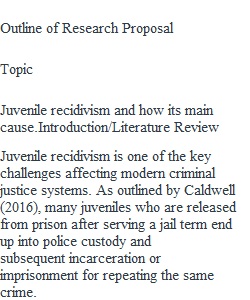


Q So above, you have information about your Research Proposal paper (your final product for this course). The TurnItIn link where you can submit the finished proposal is on the bottom of this module page (but don't use it yet!!!). Before you start writing your paper, submit an outline for your paper here. My hope is that my feedback on your plan and sources can help you write a strong research proposal (especially since it contributes such a large portion of your grade!). For the OUTLINE of your research proposal, you need to provide 5 pieces of information (the parts in bold font below are especially important!): 1) Topic/title of the paper 2) Intro/outline of literature review (do not copy and paste your lit review here - instead, summarize it in a few sentences) 3) Research hypothesis (or hypotheses) 4) Method of testing your hypotheses (a rough plan of your Data and Methods section, make it clear how you would select your sample and measure key variables) 5) References (the list of articles you are planning to use for your research paper, in APA format). Please refer to the attached example of a research proposal outline that I wrote to give you a better idea of what I am looking for. Even though your outline is due on Wed, Jun 23, I encourage you to submit it sooner: this way, I will be able to give you feedback sooner, and you will be able to have more time for writing your research proposal. Also, please submit as an attached Word file (to make it easier for me to enter comments within text). Attachments o CJST-6611_Outline_Research_Proposal_example.pdf
View Related Questions